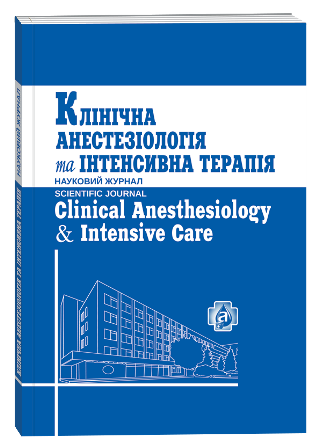EFFECT OF INTRAAORTIC BALLOON COUNTERPULSATION ON THE DURATION OF MECHANICAL VENTILATION, RENAL FUNCTION, AND THE NEUROLOGICAL COMPLICATIONS IN PATIENTS WITH LOW CARDIAC OUTPUT SYNDROME AFTER CARDIAC SURGERY
DOI:
https://doi.org/10.31379/2411.2616.12.2.5Keywords:
low cardiac output syndrome, intraaortic balloon counterpulsation, encephalopathy, acute kidney damage, reintubationAbstract
Intra-aortic balloon counterpulsation (IABP) is the most common form of temporary mechanical circulatory support, which improves cardiac output and coronary perfusion, while reducing the left ventricular wall stress and the pulmonary capillary wedge pressure (PCWP). The purpose of the work was to evaluate the effect of mechanical circulatory support using IABP on the duration of mechanical ventilation, renal function, and the incidence of encephalopathy in the early postoperative period. For this purpose, the authors carried out a retrospective observational study which included 58 patients with EF <40 % who underwent cardiosurgical interventions under CPB in the State Institution “Heart Institute Ministry of Health of Ukraine” for a 7-month period. The obtained results indicate that the use of IABP in conjunction with traditional therapy in the postoperative period in patients with low cardiac output leads to a decrease in the number of neurological complications, the incidence and severity of acute kidney injury, and has positive effect on the respiratory function, which is manifested by reduction in the need for mechanical ventilation and repeated intubations. Thus, the early use of IABP is an effective way of preventing multiple organ failure in patients with low cardiac output after cardiac surgery.
References
Impact of intra-aortic balloon pump on short-term clinical outcomes in ST-elevation myocardial infarction complicated by cardiogenic shock: A “real life” single center experience / R. de la Espriella-Juan et al. Med Intensiva. 2017. Vol. 41, № 2. P. 86–93. doi: 10.1016/j.medin.2016.06.009.
Intra-aortic balloon pump combined with mechanical ventilation for treating patients aged > 60 years in cardiogenic shock: Retrospective analysis / H. Liu et al. J Int Med Res. 2016. Vol. 44, № 3. P. 433–434. doi: 10.1177/0300060515621443.
The need for intra aortic balloon pump support following open heart surgery: risk analysis and outcome / H. Parissis et al. Journal of Cardiothoracic Surgery. 2010. Vol. 20, № 5. P. 223–231. doi: 10.1186/17498090520.
Intra-aortic balloon pumping increases renal blood flow in patients with low left ventricular ejection fraction / E. Sloth et al. Perfusion. 2008. Vol. 23, № 4. P. 223–226. doi: 10.1177/0267659108100457.
Intra-aortic balloon pump use does not affect the renal function in patients undergoing off pump coronary artery bypass surgery / G. Muniraju et al. Ann Card Anaesth. 2011. Vol. 14, № 3. P. 188–191. doi: 10.4103/0971-9784.83996.
Increased cerebral blood flow during intra-aortic counterpulsation in cardiac patients: A-370 / M. Schmidt et al. European Journal of Anaesthesiology. 2006. Vol. 23. P. 98.
Intra-aortic balloon pump (IABP) counterpulsation improves cerebral perfusion in patients with decreased left ventricular function / C. Pfluecke et al. Perfusion. 2014. Vol. 29, № 3. P. 511–516. doi: 10.1177/0267659114525218.
Intraaortic Balloon Pump Counterpulsation and Cerebral Autoregulation: an observational study / J. Bellapart et al. BMC Anesthesiol. 2010. Vol. 12, № 10. P. 3. doi: 10.1186/1471-2253-10-3.
Influence of intra-aortic balloon pumping on cerebral blood flow pattern in patients after cardiac surgery / A. Schachtrupp et al. European Journal of Anaesthesiology. 2005. Vol. 22, № 3. P. 165–170.







